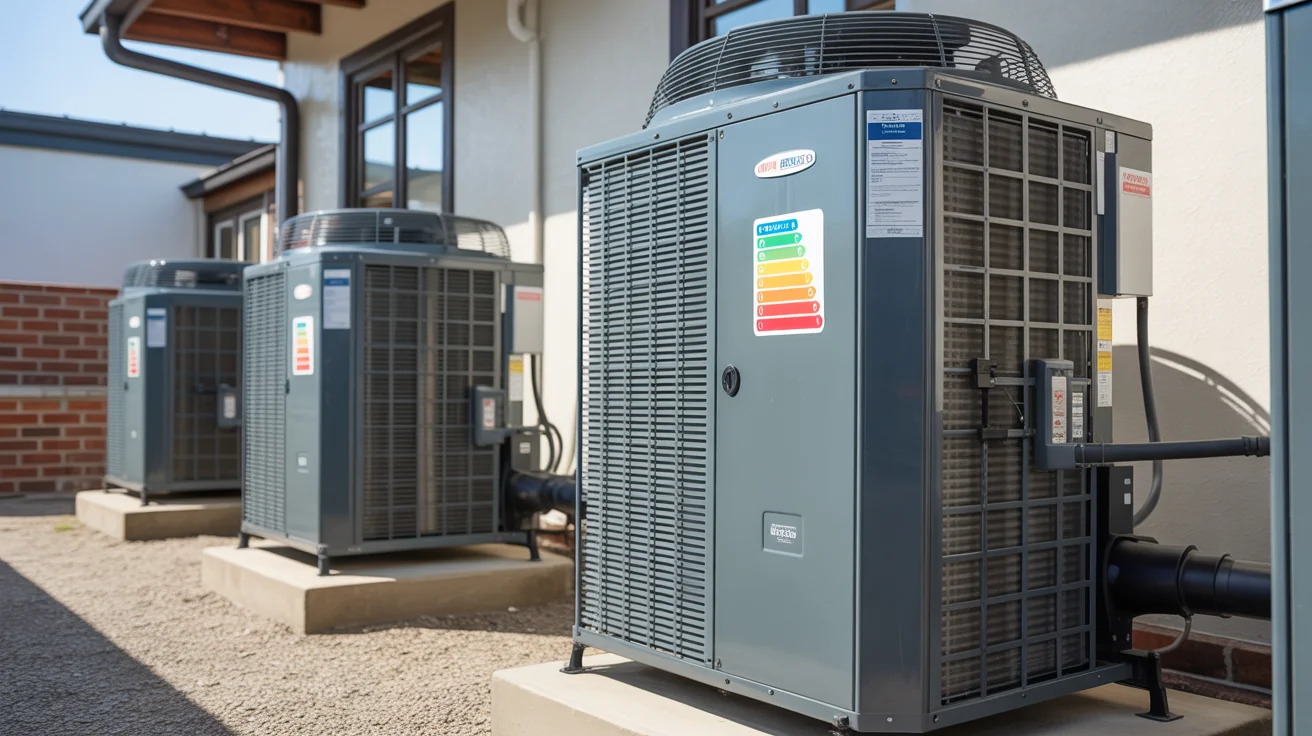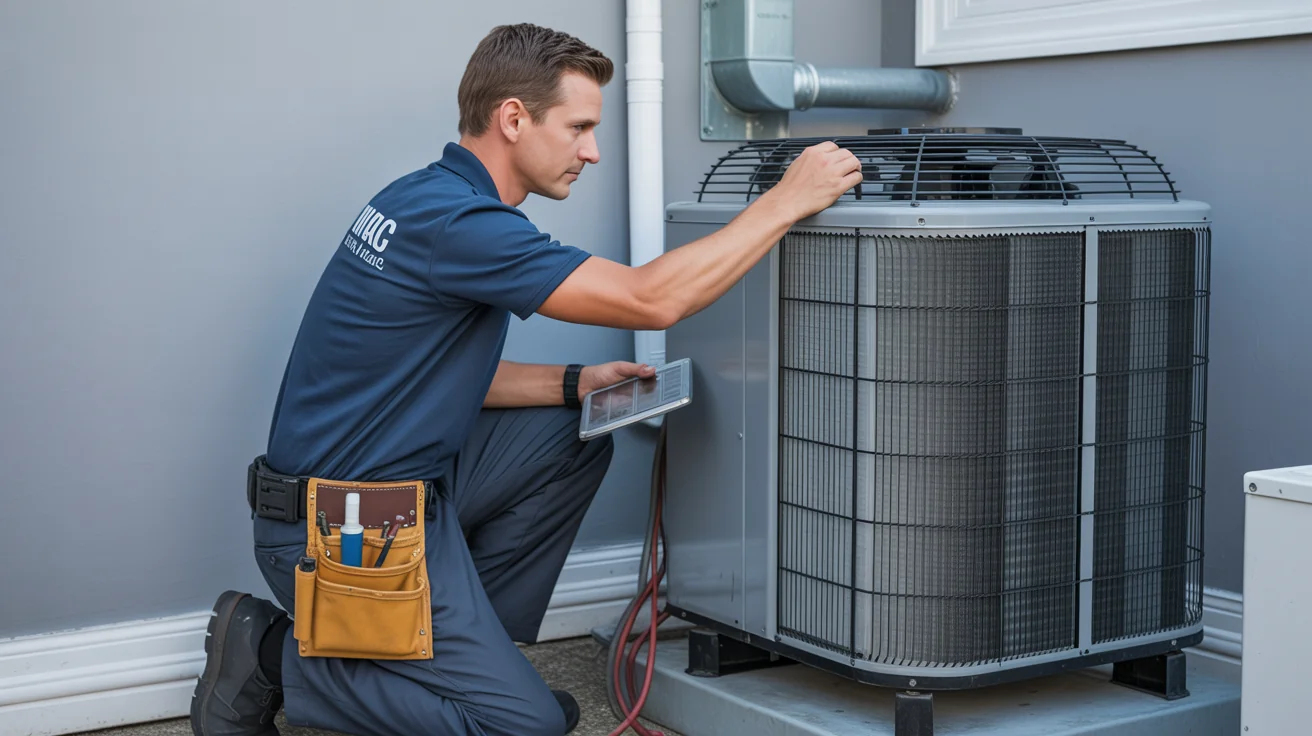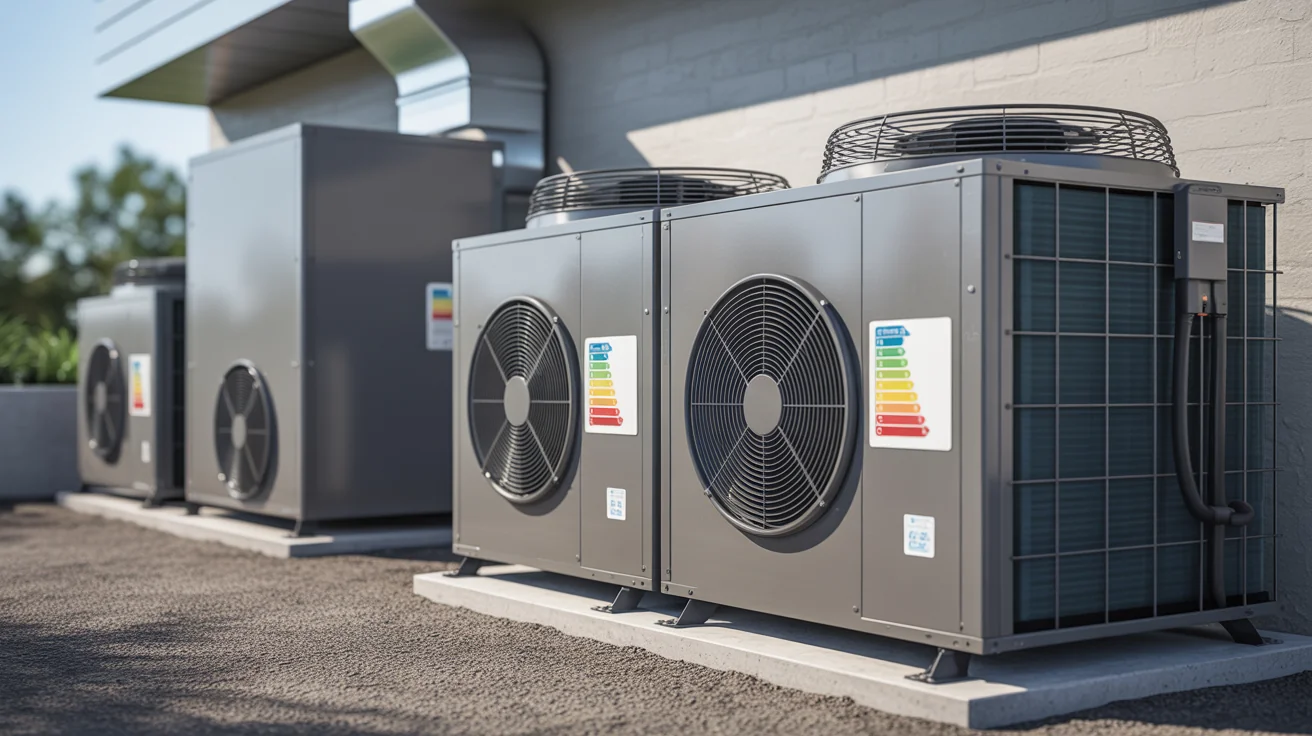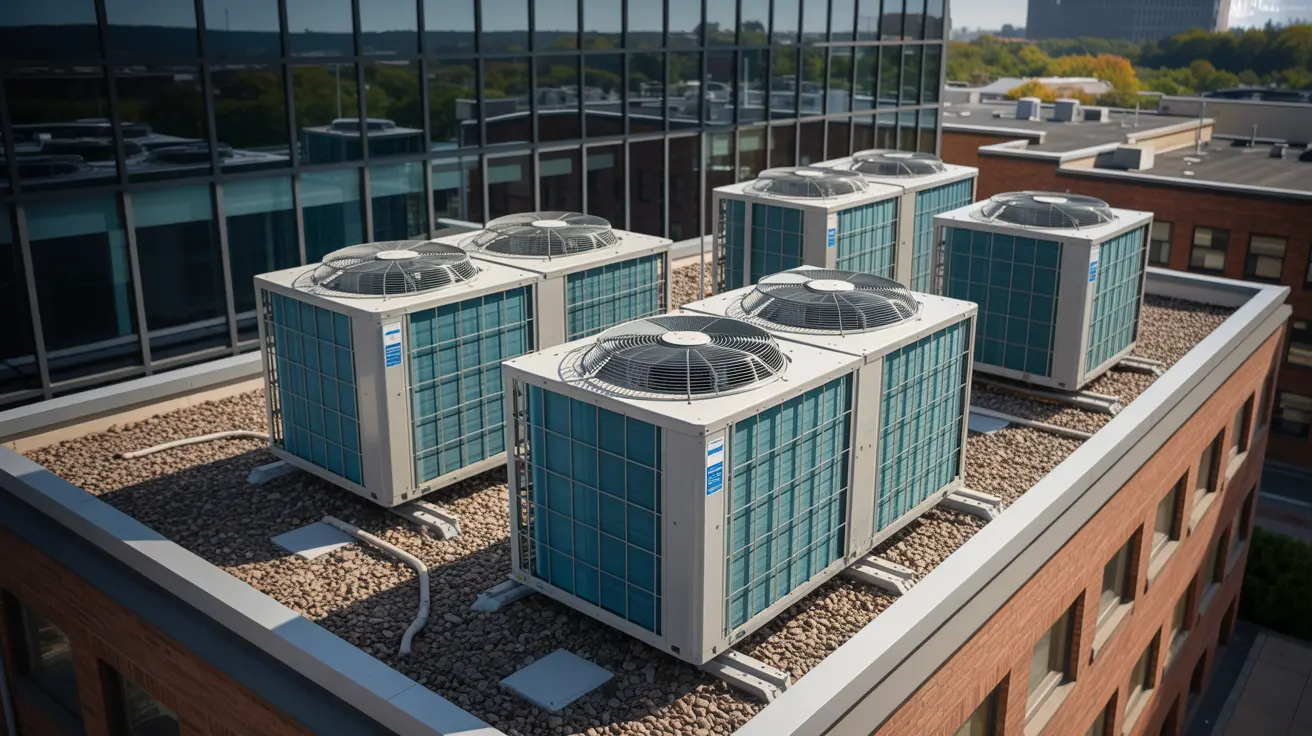Commercial HVAC Energy Management: North Texas Cost Optimization Guide
Complete guide to commercial HVAC energy management and cost optimization for North Texas businesses. Strategies for reducing energy costs, peak demand charges, and maximizing efficiency.

- Reduce Hidden HVAC Energy Waste
- Control North Texas HVAC Energy Costs
- Identify and Fix HVAC Cost Drivers
- The Hidden Cost That’s Killing Your Budget (And How to Fight It)
- Automate HVAC Controls to Cut Costs
- Equipment Efficiency Optimization
- Utility Rate Optimization
- Energy Recovery and Heat Pump Technologies
+ 5 more sections below...
- Reduce Hidden HVAC Energy Waste
- Control North Texas HVAC Energy Costs
- Identify and Fix HVAC Cost Drivers
- The Hidden Cost That’s Killing Your Budget (And How to Fight It)
- Automate HVAC Controls to Cut Costs
- Equipment Efficiency Optimization
- Utility Rate Optimization
- Energy Recovery and Heat Pump Technologies
+ 5 more sections below...
Reduce Hidden HVAC Energy Waste
I walked into a 40,000 square foot office building in Addison last August. The facilities manager was frustrated because their electric bills had hit $18,000 that month - just for HVAC. “We’ve tried everything,” he told me. “New thermostats, better filters, even threatened to fire the cleaning crew for leaving doors open.”
Turns out, their twenty-year-old rooftop units were running like freight trains with the brakes stuck on. After three weeks of energy monitoring, I discovered they were using almost double the electricity they should have been. Their peak demand charges alone were costing them $3,200 every month.
Here’s what keeps me up at night - I drive past dozens of commercial buildings every day where business owners are getting hammered by energy costs that could be cut in half with proper management. We’re talking about saving $5,000 to $50,000 annually, depending on your building size. That’s real money that goes straight to your bottom line instead of Oncor’s.
The thing is, most business owners think their high energy bills are just “the cost of doing business” in Texas. That’s complete nonsense. With the right approach, you can slash your HVAC costs by 25-50% while actually improving comfort and reliability.
Control North Texas HVAC Energy Costs
Working commercial HVAC in this region for fifteen years has taught me something that would shock most business owners: North Texas has one of the most punishing energy environments in the country. We’ve got this perfect storm of factors that can absolutely murder your energy costs if you’re not paying attention.
Our deregulated electricity market sounds great in theory, but it means you’re dealing with dozens of retail providers all playing pricing games. I’ve seen businesses get hit with rate spikes that doubled their bills overnight because they didn’t understand their contract terms.
Peak demand charges are where they really get you. During those brutal 2-8 PM summer periods, when everyone’s cranking their AC, the utilities charge you based on your highest 15-minute usage spike. I’ve watched a single equipment malfunction cost a restaurant $2,800 in demand charges that month because their system got stuck running full blast during peak hours.
Our climate makes everything worse. We’re running cooling systems for six to seven months straight - not the three months you see up north. When it’s 105°F outside with 85% humidity, your equipment isn’t just cooling air, it’s wringing water out of it. That takes massive amounts of energy.
Here’s what really gets me - those daily temperature swings we get can be 40 degrees or more. Your system might be dealing with 110°F at 4 PM and then 70°F by midnight. All that expanding and contracting puts stress on every component, which leads to inefficiencies and failures that cost you money.
Identify and Fix HVAC Cost Drivers
I always tell my commercial clients that managing energy costs without monitoring is like trying to lose weight without stepping on a scale. You have no idea what’s actually happening.
Last month, I did an energy audit for a 25,000 square foot retail complex in Frisco. The owner was convinced his problems were with old equipment, but after monitoring their usage for two weeks, I discovered the real issue: their building automation system was bringing all the rooftop units online at exactly the same time every morning. That 7 AM power surge was creating massive demand charges.
A proper energy audit isn’t just about walking around with a clipboard. I’m bringing in $15,000 worth of monitoring equipment to track every amp, every BTU, every degree of temperature variation. We’re looking at equipment inventory and condition, but more importantly, we’re analyzing when and how your systems actually use energy.
The load profile analysis usually surprises people. You might think your peak usage is during the hottest part of the day, but often it’s during startup when everything kicks on at once. I’ve found businesses spending $8,000 annually in unnecessary demand charges just because their systems aren’t staged properly.
What really matters is establishing a baseline. Once we know exactly how your building uses energy - hour by hour, system by system - we can spot the opportunities. I’ve seen cases where a $2,500 control system upgrade saved $18,000 annually just by optimizing when equipment runs.
The Technology That Actually Makes a Difference
I used to think energy monitoring was just fancy equipment for big corporations, but after installing these systems in buildings from 5,000 to 150,000 square feet, I can tell you they pay for themselves incredibly fast.
Real-time monitoring means I can sit in my truck and watch exactly what every piece of equipment in your building is doing right now. Last Tuesday, I got an alert on my phone that a rooftop unit at a client’s office building was drawing 40% more power than normal. Turned out the economizer damper was stuck, forcing the unit to overcool incoming air. A $200 repair prevented what would have been a $1,200 monthly increase in energy costs.
The data analytics piece is where things get really interesting. These systems learn your building’s patterns and can predict problems before they cost you money. I installed a system at a manufacturing facility in Allen that identified a failing compressor three weeks before it would have died completely. Instead of an emergency replacement during peak summer - which would have cost $14,000 - we scheduled the repair for $3,800.
Load factor optimization sounds complicated, but it’s basically about smoothing out your energy usage so you’re not getting hammered with demand charges. When your system can automatically stage equipment to avoid those peak spikes, I’ve seen demand charges drop by 60% or more.
The Hidden Cost That’s Killing Your Budget (And How to Fight It)
Here’s something that makes my blood boil - most business owners have no idea what demand charges are, but they’re often paying more for demand than they are for the actual electricity they use.
Demand charges are based on your highest 15-minute power usage during each month. So if your building draws 200 kW for just 15 minutes during peak hours, you pay for 200 kW all month long - even if your average usage is only 80 kW. In North Texas, you’re looking at $8 to $25 per kilowatt in demand charges every single month.
I worked with a dental practice in McKinney where their demand charges were costing them $2,400 monthly. Their peak usage happened at 7:30 AM when their staff arrived and turned on every piece of equipment at once - computers, lights, sterilizers, air compressors, and the HVAC system. A simple $800 timer system that staged their equipment startup over 30 minutes instead of all at once cut their demand charges by 75%.
Here’s the kicker - that peak summer demand follows you around all year. So if you have one bad day in July where your system goes crazy, you pay for it every month until the following July. I’ve seen businesses pay an extra $8,000 annually because of a single equipment malfunction that lasted two hours.
Smart Ways to Outsmart the Utility Company
The key to beating demand charges is getting your equipment to stop being selfish. Instead of every system demanding power at the same time, you need them to take turns.
Load shedding sounds complicated, but it’s really about having a system that automatically reduces power usage during peak periods. I installed a demand response system at a retail complex in Plano that raises the temperature setpoint by 3 degrees during peak hours. Customers don’t notice the difference, but it cuts the cooling load by 20-30% right when demand charges are highest.
Equipment staging is probably the biggest bang for your buck. Instead of all your rooftop units starting up at 7 AM, you stage them over 20-30 minutes. Same cooling, way lower peak demand. I’ve cut demand charges by $3,000 monthly with nothing more than better controls.
Pre-cooling is like energy arbitrage. You use cheaper off-peak electricity to cool your building extra cold, then let it coast during peak hours. Your thermal mass becomes a battery. A restaurant I work with in Addison pre-cools their dining room to 68 degrees at 11 AM, then lets it drift to 74 degrees during the lunch rush. Customers stay comfortable, and their peak demand drops by 40%.
Battery systems used to be crazy expensive, but the prices have dropped so much that I’m seeing paybacks in 4-6 years for buildings with serious demand charge problems. You charge the batteries at night with cheap electricity, then use that stored power during peak periods.
Automate HVAC Controls to Cut Costs
The smartest buildings I work with basically run themselves. The automation system learns how long it takes to cool your space, what the weather’s going to do, and when people actually show up to work. Then it optimizes everything automatically.
Optimal start control is brilliant in its simplicity. Instead of firing up your HVAC system at 6 AM every day whether it needs it or not, the system calculates exactly when to start based on outdoor temperature, building thermal mass, and target comfort time. On a mild 75-degree morning, it might not start until 7:30 AM. On a 95-degree scorcher, it starts at 5:45 AM.
Optimal stop is the flip side - your system figures out it can shut down at 4:30 PM and coast on thermal mass until 5 PM when everyone leaves. That saves 30 minutes of runtime daily, which adds up to serious money over a year.
Night setback should be a no-brainer, but you’d be surprised how many buildings keep their HVAC running full blast all night for empty spaces. I set up a law office in Frisco to let their temperature drift to 80 degrees after hours, then bring it back to 72 degrees an hour before staff arrives. Cut their after-hours energy use by 70%.
Seasonal programming means your system gets smarter about outdoor conditions. In October, when it’s 85 degrees outside, your building doesn’t need the same aggressive cooling it needed in July when it was 105 degrees.
Zone control is where automation really shines. Why cool the entire third floor when only the accounting department is working late? Smart systems track occupancy and only condition the spaces being used. I installed a system at a professional building where conference rooms automatically go into setback mode 30 minutes after meetings end. The building went from cooling 40,000 square feet constantly to conditioning only the spaces actually being used, cutting energy costs by 35%.
Daylight sensors are incredibly effective in buildings with lots of windows. When there’s plenty of natural light streaming in, the system automatically reduces the cooling load in those zones because it knows the sun is doing some of the heating. Occupancy sensors take it further - empty offices don’t get conditioned air until someone walks in.
Economizer and Free Cooling Strategies
Airside Economizers: Using outdoor air for cooling when conditions permit provides significant energy savings.
Economizer optimization includes several approaches. Dry bulb economizers use outdoor air when temperature is below indoor temperature, while enthalpy economizers compare outdoor and indoor air energy content. Differential enthalpy provides advanced control by comparing outdoor and return air conditions. Integrated economizers combine mechanical cooling with free cooling, and fault detection monitors economizer operation for optimal performance.
Free Cooling Benefits:
Free cooling strategies provide substantial energy savings of 20-40% during suitable weather conditions when outdoor temperatures allow natural cooling. Equipment life extension results from reduced compressor operation, significantly extending the lifespan of expensive cooling equipment. Improved air quality comes from increased outdoor air during economizer operation, providing better ventilation without energy penalties. Peak demand reduction during free cooling periods reduces electrical demand charges during the most expensive rate periods.
Equipment Efficiency Optimization
High-Efficiency Equipment Selection
Energy-Efficient Equipment Technologies: Modern commercial HVAC equipment offers significant efficiency improvements over older systems.
High-efficiency commercial equipment options deliver significant improvements. Variable refrigerant flow (VRF) systems provide 15-30% better efficiency than traditional systems. Magnetic bearing chillers achieve 35-50% better efficiency than standard chillers. Variable speed drives offer 20-50% energy reduction for fans and pumps. Premium efficiency motors improve efficiency by 2-8% over standard motors, and advanced heat exchangers provide improved heat transfer with reduced energy consumption.
Equipment Right-Sizing:
Proper equipment right-sizing begins with load analysis based on actual building loads rather than rough estimates or rules of thumb. Multiple smaller units often provide better part-load efficiency than single large units, allowing systems to match varying load conditions more precisely. Variable capacity equipment matches cooling and heating output to actual loads, eliminating the inefficiencies of on-off cycling. Staged equipment with multiple stages of operation improves efficiency by allowing gradual capacity increases as loads increase. Redundancy planning provides backup capacity without oversizing primary equipment, ensuring reliability while maintaining efficiency.
System Integration and Optimization
System-Level Efficiency: Optimizing entire systems rather than individual components provides maximum energy savings.
Integration Strategies:
System integration strategies include heat recovery systems that capture waste heat for space heating or domestic hot water, dramatically improving overall building efficiency. Demand-controlled ventilation reduces outdoor air requirements based on actual occupancy rather than design maximums, saving significant energy during low-occupancy periods. Integrated lighting control coordinates lighting and HVAC systems for optimal energy use, reducing cooling loads when natural lighting is adequate. Automated window and shading control reduces solar heat gain during peak cooling periods while maximizing beneficial solar heating during winter. Thermal mass management uses building mass for energy storage and load shifting, pre-cooling during off-peak hours and coasting during peak periods.
Utility Rate Optimization
North Texas Utility Rate Analysis
Commercial Rate Structure Understanding: Different rate structures offer opportunities for cost optimization through strategic energy management.
Rate Structure Options:
North Texas Commercial Rate Options:
Standard rates provide fixed energy and demand charges that offer predictable costs for basic commercial operations. Time-of-use rates offer variable energy charges based on time of day, rewarding businesses that can shift usage to off-peak periods. Real-time pricing provides hourly energy prices based on market conditions, offering maximum savings potential for businesses with flexible operations. Demand response programs provide bill credits for load reduction during peak periods, creating additional revenue opportunities for participating businesses. Custom rates offer negotiated rates for large customers with substantial electrical loads and unique usage patterns.
Rate Selection Strategy:
Usage pattern analysis involves matching rate structure to actual energy usage patterns, ensuring businesses choose rates that align with their operational schedules and load characteristics. Cost comparison modeling compares total costs under different rate structures by analyzing historical usage data and projecting costs under various rate options. Load factor improvement implements strategies to improve average to peak demand ratio, reducing demand charges through more consistent energy usage patterns. Peak avoidance involves operational changes to avoid highest cost periods, shifting energy-intensive operations to times when rates are lower. Demand response participation focuses on maximizing utility program benefits by actively participating in load reduction programs during peak demand periods.
Energy Procurement Strategies
Retail Electric Provider Selection: In Texas’s deregulated market, choosing the right electricity provider significantly impacts costs.
Provider Evaluation Criteria:
Electricity provider evaluation requires comprehensive rate structure comparison, examining energy rates, demand charges, and additional fees that can significantly impact total costs. Contract terms analysis includes understanding contract length, renewal terms, and early termination penalties that can lock businesses into unfavorable rates. Green energy options evaluation considers renewable energy availability and pricing for businesses with sustainability goals. Customer service quality assessment examines service reliability and problem resolution capabilities, particularly important for businesses with critical cooling needs. Additional services evaluation includes energy management services and efficiency programs that some providers offer to commercial customers.
Energy Recovery and Heat Pump Technologies
Energy Recovery Systems
Heat Recovery Applications: Capturing and reusing waste heat provides significant energy savings opportunities.
Commercial heat recovery options include heat recovery ventilators that recover heat from exhaust air, and energy recovery ventilators that recover both heat and moisture. Waste heat recovery captures waste heat from equipment for space heating. Heat pump water heating uses waste heat for domestic hot water, while refrigeration heat recovery captures condenser heat for space heating.
Recovery systems provide substantial benefits including energy savings of 20-60% reduction in heating and cooling energy. They improve air quality through enhanced ventilation without energy penalty and allow for equipment downsizing with smaller heating and cooling equipment needs. Operating cost reduction comes from lower energy costs and improved cash flow, plus environmental benefits from reduced energy consumption and carbon emissions.
Heat Pump Optimization for North Texas
Commercial Heat Pump Applications: Heat pumps provide exceptional efficiency for North Texas commercial buildings.
Heat pumps provide year-round efficiency with efficient heating and cooling in North Texas climate. They offer lower operating costs with 30-50% lower heating costs than electric resistance heating. Reduced maintenance comes from fewer mechanical components than separate heating and cooling systems. Environmental benefits include lower carbon emissions than gas heating, and utility incentives provide enhanced rebates for commercial heat pump installations.
Financial Analysis and ROI
Energy Management Investment Analysis
Cost-Benefit Analysis: Energy management investments require careful analysis of costs, benefits, and payback periods.
Energy management investment categories include monitoring and controls with $5,000-25,000 investment and 1-3 year payback. Equipment upgrades require $20,000-200,000 investment with 3-7 year payback. Building automation systems cost $15,000-75,000 with 2-5 year payback, while energy recovery systems need $25,000-150,000 investment with 4-8 year payback.
Return on Investment Calculation:
ROI calculations for energy management investments include annual energy savings from direct energy cost reduction through efficiency improvements and optimized operation. Demand charge savings represent significant value through peak demand reduction during the most expensive utility rate periods. Maintenance savings result from reduced maintenance costs when equipment operates more efficiently with less stress and wear. Productivity benefits quantify improved comfort leading to increased employee productivity and reduced absenteeism. Property value enhancement reflects increased building value from energy efficiency improvements that make buildings more attractive to tenants and buyers.
Financing Options and Incentives
Energy Efficiency Financing: Multiple financing options are available for commercial energy efficiency improvements.
Financing Alternatives:
Utility rebates provide direct financial incentives for qualifying equipment and efficiency improvements, often covering 20-40% of project costs. Equipment financing through traditional loans and leases allows businesses to spread costs over time while realizing immediate energy savings. Energy service agreements provide third-party financing with guaranteed savings, transferring performance risk to the service provider. Property Assessed Clean Energy (PACE) financing offers long-term financing through property assessments, with payments made through property tax bills. Power purchase agreements involve third-party ownership of efficiency equipment with energy savings contracts that guarantee building owners will save money.
Available Incentives:
North Texas Commercial Incentives:
- Oncor rebates: $200-2,000 per ton for high-efficiency equipment
- Federal tax credits: 10-30% tax credits for qualifying improvements
- Accelerated depreciation: MACRS depreciation for energy efficiency equipment
- State incentives: Texas Enterprise Fund and other state programs
- Municipal programs: Local rebates and incentives for energy efficiency
Implementation and Performance Management
Energy Management Program Implementation
Systematic Implementation Process:
Energy Management Implementation Steps:
1. Baseline establishment: Current energy consumption and cost analysis
2. Opportunity identification: Energy audit and improvement opportunity assessment
3. Project prioritization: Cost-benefit analysis and set upation planning
4. System installation: Professional installation of energy management systems
5. Commissioning and optimization: System startup and performance verification
6. Ongoing monitoring: Continuous performance tracking and optimization
Performance Verification: Measurement and verification: documenting actual energy savings achieved. Continuous commissioning: ongoing system optimization and improvement. Performance reporting: regular reporting of energy performance and savings. System maintenance: maintaining energy management systems for continued savings. Program expansion: identifying additional opportunities for improvement.
Staff Training and Engagement
Building Operator Training: Proper operation of energy management systems requires trained building operations staff.
Training Components: System operation: understanding and operating energy management systems. Troubleshooting: identifying and resolving system problems. Optimization techniques: advanced strategies for energy savings. Reporting and analysis: using energy data for decision making. Maintenance procedures: maintaining systems for optimal performance.
Frequently Asked Questions
Q: How much can energy management reduce commercial HVAC costs? A: Professional energy management typically reduces HVAC operating costs by 25-50%, with payback periods of 1-5 years depending on improvements set uped.
Q: What is the most effective strategy for reducing peak demand charges? A: Automated demand response systems that adjust temperature setpoints and cycle equipment during peak periods are typically the most effective demand reduction strategy.
Q: Should I invest in building automation for energy management? A: Building automation provides excellent ROI for most commercial buildings over 10,000 square feet, typically paying for itself within 2-5 years through energy savings.
Q: How do North Texas utility programs help with energy management? A: North Texas utilities offer significant rebates for energy-efficient equipment, demand response programs with bill credits, and custom incentives for large projects.
Q: What maintenance is required for energy management systems? A: Energy management systems require regular calibration, software updates, and performance monitoring, typically costing 5-10% of annual energy savings.
Q: Can energy management improve indoor air quality and comfort? A: Yes, proper energy management often improves comfort through better temperature control, humidity management, and air quality while reducing energy costs.
Take Action: Implement Commercial Energy Management
Don’t accept high energy costs when professional energy management can dramatically reduce expenses while improving comfort and performance. Start optimizing your commercial HVAC energy consumption today.
Ready for professional commercial energy management? Call (940) 390-5676 for complete energy analysis and management services. Schedule online at jupitairhvac.com/contact. Ask about our energy management programs and guaranteed savings options. Get started with professional energy audit and optimization planning.
Professional Energy Management Services
Jupitair HVAC provides complete commercial energy management throughout North Texas: Comprehensive energy audits and opportunity identification. Professional system installation and commissioning for energy management systems. Ongoing monitoring and optimization for continued energy savings. Guaranteed performance with measurement and verification of energy savings.
Commercial HVAC energy management requires systematic analysis, advanced technologies, and ongoing optimization. Trust Jupitair HVAC’s energy management specialists to reduce your operating costs while improving system performance and reliability.
Jupitair HVAC - Your North Texas commercial energy management experts since 2008. Licensed & Insured.
Need Professional HVAC Service?
Our certified technicians are ready to help with any HVAC needs in North Texas




